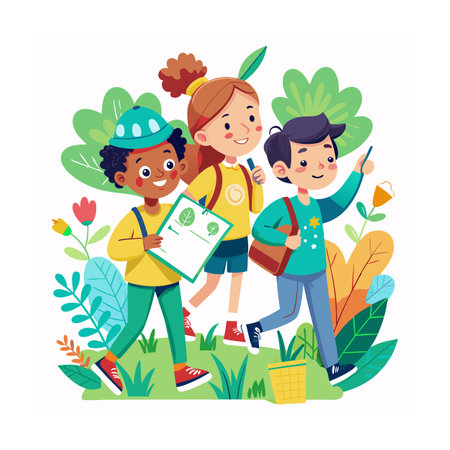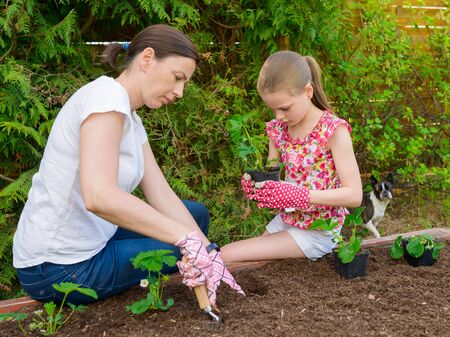1. Starting a Pizza Garden
Looking for a fun and educational summer activity that brings the whole family together? Try starting a pizza garden! This hands-on project teaches kids how to grow popular pizza ingredients like tomatoes, basil, and peppers—right in your backyard or even in containers on the patio. It’s a great way to spark interest in gardening and healthy eating.
Why Start a Pizza Garden?
A pizza garden is not only easy to grow, but also incredibly rewarding for kids. They get to plant seeds, watch their veggies grow, and finally use their harvest to make delicious homemade pizzas. It’s an exciting “seed-to-table” experience that makes learning about food both tasty and fun.
What You’ll Need
| Ingredient | Recommended Variety | Growing Tips |
|---|---|---|
| Tomatoes | Roma or Cherry Tomatoes | Plant in full sun; use cages for support |
| Basil | Genovese Basil | Pinch off flowers to encourage leaf growth |
| Peppers | Bell or Banana Peppers | Start indoors if possible; transplant after last frost |
How to Get Started
- Choose Your Spot: Pick a sunny area in your yard or use large pots if space is limited.
- Prepare the Soil: Mix compost into the soil to give plants a nutrient boost.
- Plant the Seeds or Seedlings: Follow spacing instructions on seed packets or tags.
- Water Regularly: Keep soil moist but not soggy—early morning is best for watering.
- Add Mulch: Use straw or bark mulch around plants to retain moisture and reduce weeds.
Pep Up the Fun
Create DIY plant markers using painted rocks or popsicle sticks so kids can identify what they’ve planted. Let them keep a garden journal with drawings and notes about how their plants are growing. When harvest time comes, host a family pizza night where everyone picks their own toppings straight from the garden!
Pro Tip:
If youre short on time or space, start with a container garden. A large pot with one tomato plant, one basil plant, and one pepper plant can still provide enough ingredients for several homemade pizzas over the season.
This summer, bring your family closer by turning gardening into something deliciously memorable—a pizza garden adventure!
2. Building a Butterfly and Pollinator Garden
Creating a butterfly and pollinator garden is a fun and educational summer project for kids and families across the U.S. Not only does it add beauty to your yard, but it also helps support local ecosystems by attracting butterflies, bees, and hummingbirds. This hands-on activity teaches children about pollination, native plants, and the importance of protecting wildlife.
Why Pollinator Gardens Matter
Pollinators like butterflies, bees, and hummingbirds play a big role in helping plants grow fruits and vegetables. By building a pollinator-friendly garden, youre giving these helpful creatures food and shelter while learning how nature works together.
Choosing Native Plants
Selecting native wildflowers and plants is key to a successful pollinator garden. Native species are adapted to your local climate and are more likely to attract local pollinators. Heres a quick guide based on U.S. regions:
| Region | Native Flowers | Pollinators Attracted |
|---|---|---|
| Northeast | Milkweed, Bee Balm, Black-eyed Susan | Monarch Butterflies, Bumblebees |
| Southeast | Coreopsis, Purple Coneflower, Blazing Star | Hummingbirds, Honeybees |
| Midwest | Prairie Clover, Wild Bergamot, Asters | Mason Bees, Monarchs |
| Southwest | Pineleaf Penstemon, Desert Marigold, Salvia | Native Bees, Hummingbirds |
| West Coast | California Poppy, Yarrow, Lupine | Butterflies, Solitary Bees |
| Pacific Northwest | Columbine, Oregon Grape, Red-flowering Currant | Bumblebees, Rufous Hummingbirds |
Tips for Building Your Garden with Kids
- Select a sunny spot: Most pollinator plants need at least 6 hours of sunlight per day.
- Create planting zones: Group flowers by height and color to make it easy for kids to plant.
- Add water sources: A shallow dish with pebbles can help bees stay hydrated.
- Avoid pesticides: Many chemicals harm pollinators—use natural methods instead.
- Make it fun: Let kids paint signs or decorate stepping stones for their garden.
Learning Opportunities for Kids
This project is a great way to introduce science topics like life cycles, ecosystems, and environmental stewardship in a hands-on way. As they plant and observe their garden over time, children can journal what they see or draw pictures of visiting butterflies and bees.
Bonus Idea: Start a Pollinator Observation Chart!
Create a simple chart where your child can mark which pollinators visit the garden each day. This encourages daily observation and builds excitement as new visitors arrive throughout the season.
A butterfly and pollinator garden isnt just beautiful—it’s buzzing with learning opportunities all summer long!

3. DIY Fairy or Dino Gardens
Looking for a fun and magical summer garden project that sparks creativity? DIY fairy or dinosaur gardens are a fantastic way for kids and families to combine gardening with imaginative play. These mini landscapes are easy to create, use mostly recycled materials, and can be customized for any backyard, porch, or balcony.
What You’ll Need
You don’t need a lot of fancy tools or supplies to get started. Here’s a simple list of what you might use:
| Materials | Examples |
|---|---|
| Container | Old pots, shallow wooden boxes, plastic bins |
| Small Plants | Succulents, moss, creeping thyme, baby tears |
| Decorations | Fairy houses, tiny furniture, pebbles, sticks |
| Dino Figurines | Plastic dinosaurs, volcano models, rocks |
| Recycled Items | Bottle caps, broken toys, old spoons |
How to Make Your Mini Garden
Step 1: Choose a Theme
Pick either a fairy garden or dinosaur world—or mix both! Let your kids decide the story behind their garden.
Step 2: Prepare Your Container
Add soil to your container and plan where plants and decorations will go. Make sure the container has drainage holes if using live plants.
Step 3: Plant Small Greens
Select low-maintenance plants that stay small. Succulents and ground covers work well and don’t need much watering.
Step 4: Add Decorations
This is the fun part! Arrange fairy houses under leaves, set up dinosaur scenes near little rock mountains, or build paths with pebbles.
Step 5: Tell a Story
Encourage your kids to name their characters and write a short story about the garden they created. This adds an educational and creative twist!
Why It’s Great for Families in the U.S.
This project works well in all climates because it can be done indoors or outdoors. It’s perfect for summer days when you want to keep kids engaged without screens—and it doubles as a beautiful addition to your home or yard!
4. Garden Crafts with Upcycled Materials
Looking for a fun, hands-on way to teach kids about gardening and sustainability this summer? Try turning everyday household items into creative garden crafts! These upcycled projects are perfect for families who want to spend quality time together while also encouraging artistic expression and eco-friendly habits.
Why Upcycled Crafts Are Great for Kids
- Promotes creativity: Kids use their imagination to transform old items into something new and useful.
- Teaches sustainability: Reusing materials helps reduce waste and builds environmental awareness.
- Hands-on learning: Children get involved in real-life DIY projects they can be proud of.
Easy Upcycled Garden Projects
Here are a few simple and fun ideas that you can try at home using materials you probably already have.
| Item to Upcycle | Project Idea | How It Helps the Garden |
|---|---|---|
| Mason Jars | Herb planters or hanging lanterns | Adds charm to your garden and helps grow fresh herbs |
| Tin Cans | Painted flower pots or bird feeders | Provides homes for plants or food for local birds |
| Old Rain Boots | Colorful planters with drainage holes | Keeps worn-out shoes out of landfills and adds whimsy to your yard |
| Plastic Bottles | DIY watering cans or vertical gardens | Saves water and space while teaching plant care skills |
Tips for Crafting with Kids
- Supervise when using scissors, paint, or hot glue guns.
- Let kids choose colors and designs—they’ll love taking ownership of their creations!
- Display finished crafts proudly in your garden to boost confidence and joy.
Upcycled garden crafts are a fun and educational way to spend summer days with your family. Not only will kids learn valuable skills, but they’ll also gain a deeper appreciation for nature and creativity—all while giving new life to old things!
5. Setting Up a Backyard Veggie Stand
One of the most fun and rewarding summer garden projects for kids in the U.S. is setting up a backyard veggie stand. This simple activity combines gardening with entrepreneurship, giving children a chance to harvest their own produce and sell it to neighbors and friends. It’s not only a great way for them to learn responsibility, but also helps them connect with their local community.
Why Its a Great Summer Project
Running a small veggie stand teaches kids valuable life skills such as:
- Planning: Deciding what to grow and how much to plant
- Responsibility: Caring for plants daily and keeping track of harvests
- Math Skills: Pricing items, making change, and counting earnings
- Communication: Interacting with customers in a friendly way
Steps to Set Up Your Veggie Stand
- Choose What to Grow: Pick easy-to-grow summer veggies like cherry tomatoes, cucumbers, zucchini, and herbs.
- Create a Growing Schedule: Make sure your crops will be ready during peak summer months—June through August.
- Design the Stand: Use a table or wooden crates under a shade umbrella. Add handmade signs with prices.
- Set Fair Prices: Keep prices affordable so neighbors are encouraged to support the kids efforts.
- Advertise Locally: Create flyers or post on community boards or neighborhood social media groups.
Popular Crops for Kids’ Veggie Stands
| Crop | Growing Time (Weeks) | Kid-Friendly Tips |
|---|---|---|
| Cherry Tomatoes | 8–10 | Grow in pots or hanging baskets for easy access |
| Cucumbers | 6–8 | Add trellises for vertical growing fun |
| Zucchini | 6–7 | Harvest young for better flavor and faster sales |
| Basil & Mint | 4–6 | Create herb bundles or flavored water samples to attract buyers |
Extra Fun Ideas
- Add homemade lemonade or baked goods for variety.
- Create “Veggie Bucks” coupons for return customers.
- Let kids dress up as “gardeners” to make it more playful.
A backyard veggie stand is more than just a way to sell extra produce—it’s a chance for kids to take pride in their work and build confidence while having fun outdoors all summer long.


